As a neuroscience-based personal and professional development coach, I’ve seen firsthand how the lens of perspective can transform lives. Perspective is not just a way of seeing things; it’s the filter through which we interpret every experience, every relationship, and every challenge. Taking a neuroscience-biological perspective allows us to understand how brain structure and function shape the way we interpret and respond to the world. The neuroscience of perspective reveals that this lens is deeply rooted in the brain’s architecture and function, influencing how we think, feel, and act every single day.
What Is Perspective?
What if I told you that the next thought you have could literally change the wiring of your brain? Imagine standing at a crossroads in your mind, with the power to build a brand new road in any direction you choose. That’s not science fiction—it’s the neuroscience of perspective in action.
Let me take you inside a real coaching session. Picture Alex, a client who walked into my office convinced that every setback meant he was doomed to fail. “It’s just the way I am,” he’d shrug, his voice heavy with defeat. But the neuroscience of perspective teaches us that no one is truly stuck. Together, we tried something bold: every time Alex caught himself spiraling into old thinking, he’d jump up, shake his body, and ask, “What else could be true?” At first, it felt silly. But week by week, his brain started to crave curiosity instead of criticism. The highways of self-doubt in his mind slowly gave way to new, hopeful paths.
Neuroplasticity is your brain’s secret superpower. It means you can reshape your perspective at any age, in any situation. And you don’t need to meditate on a mountaintop to do it. Try this: keep a “perspective journal” where you write about a challenge from three points of view—a supportive friend, a future you, and even a comedian. This playful exercise stimulates new neural circuits, making your brain more flexible and adaptable.
Don’t underestimate the power of your senses, either. Change your environment: rearrange your desk, take a different route home, or listen to music you’ve never tried before. Neuroscience reveals that novelty stimulates your brain, making it easier to break free from old patterns and view the world with fresh eyes.
You can even use movement—dance, stretch, or step outside—to jolt your brain into a new state. Physical activity releases chemicals that support neuroplasticity, helping your mind shift gears and embrace new perspectives.
The neuroscience of perspective is clear: your brain is not a prison, it’s a playground. Every time you experiment with a new way of thinking, feeling, or experiencing the world, you’re sending your brain a powerful message: “I’m ready for change.” Over time, these new pathways become stronger, and you’ll find yourself naturally seeing possibilities where you once saw only obstacles.
So next time you feel stuck, remember—you’re only one thought, one action, or one fresh perspective away from literally changing your brain and your life.

Why Is Perspective So Important?
Our perspective determines how we respond to life’s events. It colors our emotions, guides our decisions, and influences our behavior. A positive or growth-oriented perspective can foster resilience, creativity, and well-being, while a narrow or negative perspective can limit our potential and increase stress. The neuroscience of perspective teaches us that by shifting our mental lens, we can literally change the way our brains respond to the world.
The Brain and Perspective: Key Players
The neuroscience of perspective highlights several brain regions involved in forming and shifting perspective:
- Prefrontal cortex: Acts as the brain’s CEO, integrating information and enabling cognitive flexibility.
- Temporoparietal junction (TPJ): It helps us take others’ viewpoints, which is essential for empathy and social understanding.
- Default mode network (DMN): Supports self-reflection and mental time travel, allowing us to imagine different scenarios and outcomes.
- Amygdala: Colors our perceptions with emotional significance, especially during stress or threat.
Recent neuroimaging studies show that these areas work together to help us adopt, shift, and maintain different perspectives, whether we’re reflecting on our own experiences or trying to see the world through someone else’s eyes.
Factors That Determine Perspective
Several factors shape our perspective, including:
- Personality traits: Some people are naturally more open, optimistic, or flexible.
- Cultural background: Our upbringing and culture influence how we interpret social cues and values.
- Past experiences: Memories and learned patterns guide our expectations and reactions.
- Emotional state: Our mood can bias our interpretation of events, making us more likely to perceive them as positive or negative.
- Social environment: The people we surround ourselves with can reinforce or challenge our perspectives.
Perspective as the Lens of Life
Think of perspective as the lens of a camera. It focuses, filters, and frames what we see. Changing the lens can transform a blurry or dark image into a clear and vibrant one. Similarly, shifting perspective can help us see problems as opportunities, conflicts as growth moments, and setbacks as learning experiences. The neuroscience of perspective shows that our mental lens is not just metaphorical—it’s built into the way our brains process information and emotion.

Client Story: Changing Perspective to Transform Life
One of my clients, Sarah, came to me feeling stuck and overwhelmed by negative thoughts. She saw every challenge as a threat and every failure as proof of her inadequacy. Through neuroscience-based coaching, we worked on exercises to shift her perspective. By practicing cognitive restructuring and mindfulness, Sarah learned to recognize and challenge her automatic negative thoughts. Over time, her brain rewired to favor more balanced and hopeful viewpoints. This shift not only improved her mental health but also enhanced her relationships and career.
The Science Behind Perspective-Taking
By applying a cognitive neuroscience perspective, we can examine how thought patterns and brain activity impact our capacity to shift and broaden our perspectives. The neuroscience of perspective reveals that perspective-taking is akin to a superpower your brain employs to step into someone else’s shoes and view the world from their perspective. It’s not just about guessing what someone else thinks or feels—it’s a complex process that involves different parts of your brain working together as a team.
A critical player in the neuroscience of perspective is the temporoparietal junction, commonly referred to as the TPJ. You can think of the TPJ as your brain’s social radar. It helps you pick up on clues about what others might be thinking or feeling, which is essential for empathy and getting along with people. When you understand where someone else is coming from, you’re more likely to connect, cooperate, and avoid misunderstandings.
Next, there’s the prefrontal cortex, especially a part called the dorsolateral prefrontal cortex. This area acts like your brain’s flexible planner. It helps you change your perspective when you receive new information or face a challenge. For example, if you realize you misunderstood a friend’s actions, this part of your brain helps you adjust your perspective and see things in a new light.
Another key player is the default mode network, also known as the DMN. This network is most active when you’re resting, daydreaming, or reflecting. The DMN enables you to imagine different scenarios, reflect on the past or future, and plan. This kind of mental time travel is invaluable for solving problems and managing emotions because it allows you to view situations from multiple angles before reacting.
All these brain areas work together to help you take perspective, which is essential for understanding others, making thoughtful decisions, and building strong relationships. The best part? Perspective-taking is a skill that can be practiced and improved. The more you use it, the better you get at seeing the world through different lenses, making you more empathetic, adaptable, and successful in everyday life.

How Perspective Shapes Our Emotional Experience
Our perspective acts as a filter for our emotions. For example, two people can experience the same event but feel very differently about it, based on their perspectives. A neuroscientific understanding of this process reveals that the amygdala, the brain’s emotional center, interacts with the prefrontal cortex to modulate emotional responses. When we adopt a positive or growth-oriented perspective, the prefrontal cortex can downregulate amygdala activity, reducing stress and anxiety.
Conversely, a negative perspective can amplify amygdala responses, leading to heightened emotional reactivity and even chronic stress. Bringing a neuroscience perspective to the disorder reveals how disruptions in brain networks can impact a person’s ability to see situations from different angles.
The Role of Neuroplasticity in Changing Perspective
Imagine your brain as a living city, with highways of thoughts and backroads of beliefs crisscrossing every moment. Neuroplasticity is like having a team of construction workers who, at any age, can build brand new roads and even reroute traffic away from old, unhelpful routes. This is the magic behind the neuroscience of perspective: you’re never stuck with the same mental map.
Let me share a story from my coaching practice that brings the neuroscience of perspective to life. I once worked with a client, Alex, who saw every setback as a dead end. “That’s just who I am,” he’d say. But together, we experimented with something wild: every time he caught himself spiraling, he’d physically move—stand up, stretch, or even dance for 30 seconds. This quirky ritual, paired with asking himself, “What else could be true here?” started to rewire his brain. Within weeks, Alex found himself defaulting to curiosity instead of defeat. His brain had built a new detour around his old, negative perspective.
Beyond mindful meditation, there are so many creative ways to reshape your perspective. Try “perspective journaling”—write about a challenge as if you’re a wise mentor, a comedian, or even your future self looking back. This playful exercise activates new neural circuits and makes your brain more adaptable.
Or, use music: switch up your playlist when you’re stuck in a rut. Neuroscience reveals that novel sensory experiences—such as hearing a new genre or dancing to an unfamiliar beat—activate different parts of your brain, jolting you out of mental autopilot and opening you up to fresh viewpoints.
Even your environment matters. Rearranging your workspace, taking a new route to work, or spending time in nature can spark new connections in your brain. These small changes disrupt routine thought patterns and invite new perspectives to the table.
The best part? Neuroplasticity rewards boldness and creativity. The more you experiment—whether with movement, humor, art, or even a spontaneous road trip—the more your brain learns to see the world through a kaleidoscope, not a keyhole. That’s the real power of the neuroscience of perspective: you’re not just changing your mind, you’re changing your brain.
So, next time you feel stuck, remember: your brain is a playground, not a prison. Try something new, shake up your routine, and watch as your perspective—and your life—begin to shift in ways you never imagined.
Client Story: Overcoming a Fixed Mindset
Another client, James, struggled with a fixed mindset that limited his career growth. He believed he was not capable of learning new skills and often avoided challenges. Through neuroscience-based coaching, James learned about the brain’s plasticity and how his beliefs shaped his neural pathways.
We worked on exercises to challenge his limiting beliefs and encouraged him to embrace mistakes as learning opportunities. Over time, James developed a more flexible perspective, which not only improved his confidence but also led to tangible career advancements.

Practical Tips to Shift Your Perspective
- Practice gratitude: Focusing on what you appreciate can shift your brain toward positive patterns.
- Seek diverse viewpoints: Engage with people who have different experiences to broaden your perspective.
- Challenge cognitive biases: Be aware of mental shortcuts that distort your view.
- Use visualization: Imagine yourself succeeding or handling challenges with a new perspective.
- Journal your thoughts: Writing helps clarify and reframe your perspective.
Why Perspective Matters in Personal and Professional Development
In both personal and professional contexts, perspective influences decision-making, relationships, and resilience. Leaders who cultivate a broad perspective are better at problem-solving and managing teams. Individuals with flexible perspectives tend to navigate stress more effectively and maintain healthier relationships.
My Personal Reflection on Perspective
Changing my perspective was a turning point in my coaching career. Early on, I realized that my own fixed views were limiting my ability to connect with clients and adapt to their unique needs. Embracing a neuroscience-based approach to perspective helped me become more empathetic and innovative in my coaching methods.
This journey deepened my understanding of how powerful perspective is, not just as a concept but as a lived experience shaped by our brains.
The Impact of Perspective on Relationships
Perspective shapes how we interpret the actions and intentions of others. In relationships, a narrow or negative perspective can lead to misunderstandings, conflicts, and emotional distance. Neuroscience reveals that adopting a more empathetic and flexible perspective activates brain regions associated with social bonding and trust, including the ventromedial prefrontal cortex and the oxytocin system.
For example, when you view your partner’s behavior through a lens of curiosity rather than judgment, you are more likely to respond with compassion and patience. This shift can transform conflicts into opportunities for deeper connection.
How Culture and Environment Influence Perspective
Our cultural background and environment play a significant role in shaping our perspective. Neuroscientific studies have shown that cultural norms have a considerable impact on brain activity related to social cognition and self-concept. For instance, people from collectivist cultures may have a more interdependent perspective, emphasizing group harmony, while those from individualistic cultures may focus more on personal achievement.
Understanding these influences can help us appreciate diverse viewpoints and reduce biases, fostering more inclusive and effective communication.

The Role of Emotion in Perspective
Emotions are tightly intertwined with perspective. The limbic system, including the amygdala and hippocampus, interacts with cortical areas to color our perceptions with emotional significance. When we are stressed or anxious, our perspective can become skewed toward negativity, limiting our ability to see alternative viewpoints.
Learning to regulate emotions through techniques like deep breathing, mindfulness, and cognitive reframing can help maintain a balanced perspective.
Client Story: Shifting Perspective to Overcome Anxiety
A client named Mia struggled with anxiety that distorted her perspective, making everyday situations feel overwhelming. Through neuroscience-based coaching, Mia learned to recognize how her brain’s threat detection system was amplifying her fears.
We worked on grounding techniques and perspective-taking exercises that helped her reframe anxious thoughts. Over time, Mia’s brain adapted, and she developed a more balanced and calm perspective, significantly improving her quality of life.
The Neuroscience of Perspective in Decision Making
Our perspective heavily influences decision-making processes. The prefrontal cortex evaluates options and predicts outcomes based on our mental models. A rigid perspective can lead to poor decisions, whereas cognitive flexibility enables better problem-solving and adaptability.
Neuroscience research indicates that training the brain to consider multiple perspectives can enhance creativity and innovation, essential skills in today’s complex world.
Practical Exercises to Enhance Perspective
- Perspective Journaling: Write about a challenging situation from multiple viewpoints.
- Role Reversal: Imagine yourself in another person’s shoes to gain a deeper understanding of their perspective.
- Mindful Observation: Practice observing your thoughts without judgment to increase awareness.
- Cognitive Reappraisal: Actively reframe negative thoughts into more positive or neutral ones.

Final Thoughts: Your Brain, Your Perspective, Your Power
The neuroscience of perspective teaches us that our mental lens is not fixed but malleable. By understanding the brain mechanisms behind perspective, we gain the power to change how we see ourselves and the world.
As a neuroscience-based coach, I encourage you to embrace this knowledge and practice shifting your perspective. The journey may be challenging, but the rewards—greater resilience, empathy, and fulfillment—are well worth the effort.
Remember, your brain is wired for growth. With intention and practice, you can transform your perspective and, in turn, transform your life.
Take Control of Your Perspective Today
Understanding the neuroscience of perspective is the first step toward transforming your life. By actively choosing to shift your mental lens, you can unlock new ways of thinking, feeling, and relating to the world. Whether you are facing personal challenges, professional decisions, or relationship dynamics, your perspective shapes your reality.
As a neuroscience-based personal and professional development coach, I invite you to explore these insights and apply them in your daily life. Embrace the power of neuroscience to cultivate resilience, empathy, and growth. Your brain is capable of remarkable change—start rewiring your perspective today and watch your world transform.
#neuroscienceofperspective #brainhealth #mindset #personaldevelopment #growthmindset #emotionalintelligence #cognitiveflexibility #wellbeing #mentalhealth #selfawareness #coaching #neuroplasticity #perspective #resilience #selfgrowth



